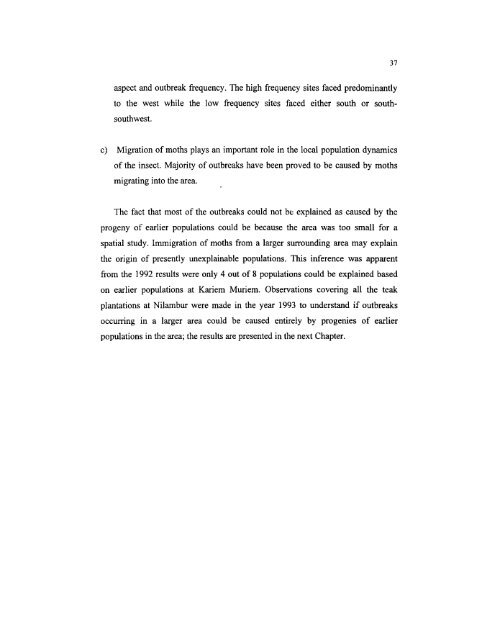Spatial dynamics of teak defoliator (Hyblaea puera Cramer) - Cochin ...
Spatial dynamics of teak defoliator (Hyblaea puera Cramer) - Cochin ...
Spatial dynamics of teak defoliator (Hyblaea puera Cramer) - Cochin ...
Create successful ePaper yourself
Turn your PDF publications into a flip-book with our unique Google optimized e-Paper software.
aspect and outbreak frequency. The high frequency sites faced predominantly<br />
to the west while the low frequency sites faced either south or south<br />
southwest.<br />
c) Migration <strong>of</strong> moths plays an important role in the local population <strong>dynamics</strong><br />
<strong>of</strong> the insect. Majority <strong>of</strong> outbreaks have been proved to be caused by moths<br />
migrating into the area.<br />
The fact that most <strong>of</strong> the outbreaks could not be explained as caused by the<br />
progeny <strong>of</strong> earlier populations could be because the area was too small for a<br />
spatial study. Immigration <strong>of</strong> moths from a larger surrounding area may explain<br />
the origin <strong>of</strong> presently unexplainable populations. This inference was apparent<br />
from the 1992 results were only 4 out <strong>of</strong> 8 populations could be explained based<br />
on earlier populations at Kariem Muriem. Observations covering all the <strong>teak</strong><br />
plantations at Nilambur were made in the year 1993 to understand if outbreaks<br />
occurring in a larger area could be caused entirely by progenies <strong>of</strong> earlier<br />
populations in the area; the results are presented in the next Chapter.<br />
37
















